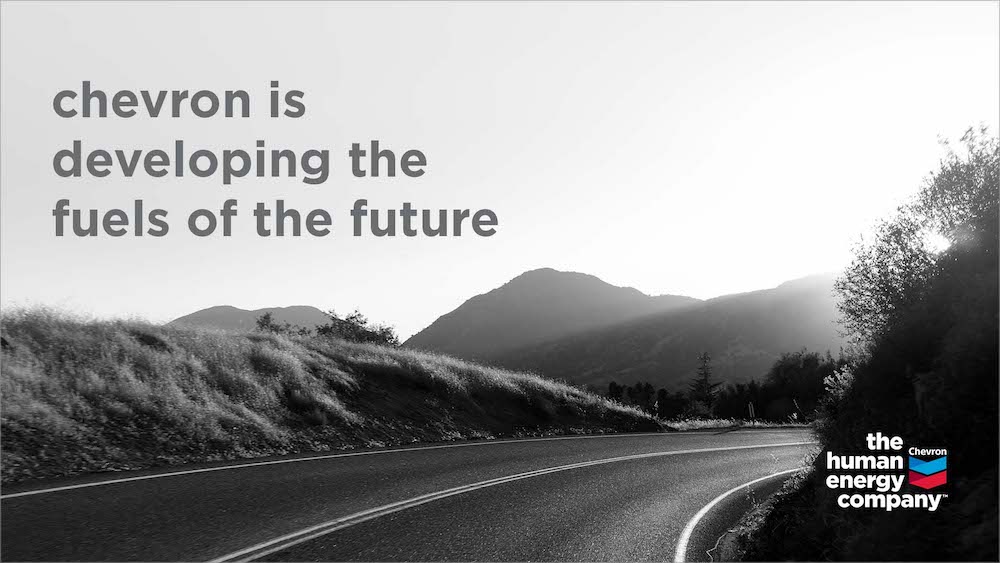| | | | | | | | | | | Axios Generate | | By Ben Geman and Andrew Freedman · Oct 11, 2022 | | 🥞 Welcome back! Today's newsletter has a Smart Brevity count of 1,290 words, 5 minutes. Situational awareness: Larry Summers tells Axios the World Bank should loosen limits on climate lending and think in the "trillions, not the billions." Go deeper. 🎶 This week marks 50 years since soul legends the Isley Brothers released today's intro tune... | | | | | | 1 big thing: Heat waves taking humanitarian toll |  | | | Photo illustration: Shoshana Gordon/Axios. Photos: Aamir Qureshi/AFP, Str/Xinhua via Getty Images | | | | A sobering new report highlights the dramatic increase in extreme heat exposure and related mortality worldwide, Andrew writes. Why it matters: The report, published yesterday, warns that heat impacts are increasing fastest in the developing world and may soon hit hard limits of human survivability. The big picture: Heat waves are already the deadliest type of extreme weather events in many countries, including the U.S. - Such events "prey on inequality," the report from the UN Office for the Coordination of Humanitarian Affairs and the International Federation of Red Cross and Red Crescent Societies finds, hitting poor and marginalized communities hardest.
- It identifies the triple threat of warming, aging and urbanization as three main factors growing the at-risk population to extreme heat.
Driving the news: The report lands after the Northern Hemisphere saw simultaneous heat waves and droughts on three continents this summer: North America, Europe and Asia. This includes a climate change-supercharged heat wave in Pakistan and parts of India. By the numbers: The report reviews published studies and cites findings that 38 extreme heat events around the world killed at least 70,000 people between 2010 and 2019 alone. - It projects a 700% global increase in the number of urban poor people living in areas that experience extreme heat by the 2050s, especially in West Africa and Southeast Asia.
- Global economic losses related to heat stress could jump from $280 billion in 1995 to $2.4 trillion in 2030, it finds.
- Low-income countries would see the most significant losses.
Threat level: Echoing findings published in the past few years, the report notes that parts of the world may become so hot as to be unlivable for at least part of the year, including the Sahel region of Africa, and South and Southwest Asia. - This is because heat waves there would exceed certain fatal heat and humidity thresholds.
What's next: The report recommends that adaptation efforts be drastically scaled up at the same time more emphasis is placed on cutting emissions of greenhouse gases. It calls adaptation spending to date, "woefully insufficient." - It also calls for improved early warning and response measures that local communities and countries can implement.
- Efforts are already being ramped up in many places, such as by appointing chief heat officers in cities in the U.S., Europe and Africa.
Read the full report. |     | | | | | | 2. Oil's ascent falters as markets await data |  Data: Yahoo Finance; Chart: Axios Visuals Oil prices have leveled off and then fallen after surging last week on the news of the OPEC+ production cut that's roiling Washington, Ben writes. Catch up fast: The coalition of OPEC, Russia and allied producers will cut 2 million barrels per day on paper (though less in real-world terms). Prices jumped last week as reports emerged that OPEC+ was preparing to announce on Oct. 5 that they would cut a significant number of barrels from the already tight market. Yes, but: Bearish signs are sapping momentum as prices fell today. "A recessionary economic outlook will lead to lower oil demand," Fitch Ratings said in a note yesterday. But Fitch sees volatility staying high based on unpredictable geopolitical factors, such as how tightening sanctions affect Russian supplies. 👀 What we're watching: This week will bring lots of potentially market-moving info, including the IMF's latest global economic outlook later this morning. - OPEC and the U.S. Energy Information Administration both release oil market outlooks tomorrow.
- The International Energy Agency's monthly report arrives the next morning.
What we don't know: The policy fallout from the Saudi's rebuke of the White House — including the fate "NOPEC" legislation that would authorize lawsuits against the cartel under U.S. anti-trust law. - The Capitol Hill suspense will continue because lawmakers are home campaigning for weeks.
- "Political pressure for passage could abate after the elections, but high pump prices might yet lead to NOPEC's being added as an amendment to another bill," ClearView Energy Partners said in a note.
|     | | | | | | 3. Delta's expanding electric plans |  | | | Photo courtesy of Joby Aviation | | | | Delta Air Lines is partnering with Joby Aviation, a leading developer of electric air taxis, to make it easier and faster for customers to get to the airport, Axios' Joann Muller reports. Why it matters: The partnership is an extension of Delta's strategy to differentiate itself from other airlines by offering a more premium experience. Driving the news: Delta is investing $60 million in Joby and could invest up to $200 million. - The plan is to integrate Joby's electric vertical takeoff and landing (eVTOL) service into Delta's existing booking process for travel to and from five cities: New York, Los Angeles, San Francisco, Miami and London.
- The service will first launch in New York and LA. Joby — seeking FAA certification for its aircraft — will pursue its own, separate air taxi service in markets that will likely include those two cities.
What to watch: Joby is among multiple companies developing eVTOLs as a faster, quieter, sustainable way to get around cities. It hopes to begin service in 2024. Read the whole story. |     | | | | | | A message from Chevron | | It's only human to help power a brighter future | | |  | | | | At Chevron, we believe the future of transportation is lower carbon, and hydrogen fuel can help us get there. We're partnering with vehicle makers and commercial truck fleet operators to scale the hydrogen fuel industry, because we believe innovation can help power a brighter future. | | | | | | 4. 🏃🏽♀️Catch up fast on tech finance | | 🔥 The new VC fund Convective Capital, which is aimed specifically at tech to help curb wildfires, has announced the $35 million close of its first fund, Ben writes. - Driving the news: The company also shared initial investments, including fire-detection startup Pano AI, and its first partners.
- Why it matters: Higher temperatures and fiercer droughts raise risks of catastrophic fires like the ones plaguing California in recent years. TechCrunch has more.
💰"Fund manager Hy24 Partners has closed what it says is the world's first infrastructure fund exclusively investing in the whole clean hydrogen value chain to new investments at 2 billion euros ($1.94 billion)," Reuters reports. |     | | | | | | 5. The energy hack for withstanding hurricanes |  | | | Homes in Babcock Ranch, a new, hurricane-resilient and solar-powered community in Southwest Florida. Photo courtesy of Paul McCreery | | | | More than 4 million Floridians lost power after Hurricane Ian. But not communities like Babcock Ranch, a Southwest Florida development that bills itself as America's "first solar-powered town," Axios' Niala Boodhoo reports. Why it matters: Boosting the resiliency of neighborhoods and infrastructure is becoming increasingly urgent as global warming makes hurricanes more powerful. Zoom in: Babcock Ranch has an 870-acre solar farm, along with solar "trees" along its streets, all of which survived Ian unscathed. - "It was remarkable because of the way this town was built, all the utilities are underground. We never lost power. We never lost internet" said resident Nancy Chorpenning.
How it works: New developments like Babcock, which are just a few years old, are built to Florida's building code — the strongest in the country when it comes to hurricanes. The planned community was built with hurricanes and flooding in mind. - It was constructed deliberately away from the coast — about 12 miles inland from Fort Myers, beyond the reach of storm surge. All structures are rated to withstand 145 mph winds.
- Surface water management includes drainage lakes, streets, and what its developers call a "heavy reliance" on native plants that are storm and fire ready.
Read the whole story. |     | | | | | | 6. To go, or not to go |  | | | Photo illustration: Shoshana Gordon/Axios. Photo: Emeric Fohlen/NurPhoto via Getty Images | | | | As climate change displaces millions of people every year, Indigenous communities worldwide are grappling with an impossible choice: to go, or not to go, Axios' Ayurella Horn-Muller reported on Indigenous Peoples Day yesterday. - Land isn't just a resource for many Indigenous peoples. It's a sacred space, central to culture, livelihood and ancestry.
Context: According to a 2022 report by the UN Refugee Agency, at least 21.5 million people are displaced annually due to climate-related disasters, like droughts, wildfires and floods. Why it matters: Climbing temperatures driven by fossil fuel pollution are creating unlivable conditions for tribal communities across the world, according to Angelo Villagomez of the Center for American Progress, who is Indigenous Chamorro from the island of Saipan. - "If we lose this connection to the land, we lose who we are, and if we lose this diversity, of ways of knowing and ways of being, we lose something in terms of a global society and being able to tackle some of these issues," says Villagomez.
Read the whole story. |     | | | | | | A message from Chevron | | It's only human to help power a brighter future | | |  | | | | At Chevron, we believe the future of transportation is lower carbon, and hydrogen fuel can help us get there. We're partnering with vehicle makers and commercial truck fleet operators to scale the hydrogen fuel industry, because we believe innovation can help power a brighter future. | | | | 📬 Did a friend send you this newsletter? Welcome, please sign up. 🙏Thanks to Mickey Meece and David Nather for edits to today's newsletter. And a hat tip to drrock.com for supplying today's music trivia. We'll see you back here tomorrow! |  | | Why stop here? Let's go Pro. | | | | | | Axios thanks our partners for supporting our newsletters. If you're interested in advertising, learn more here.
Sponsorship has no influence on editorial content. Axios, 3100 Clarendon Blvd, Arlington VA 22201 | | | You received this email because you signed up for newsletters from Axios.
Change your preferences or unsubscribe here. | | | Was this email forwarded to you?
Sign up now to get Axios in your inbox. | | | | Follow Axios on social media:    | | | | | |










No comments:
Post a Comment